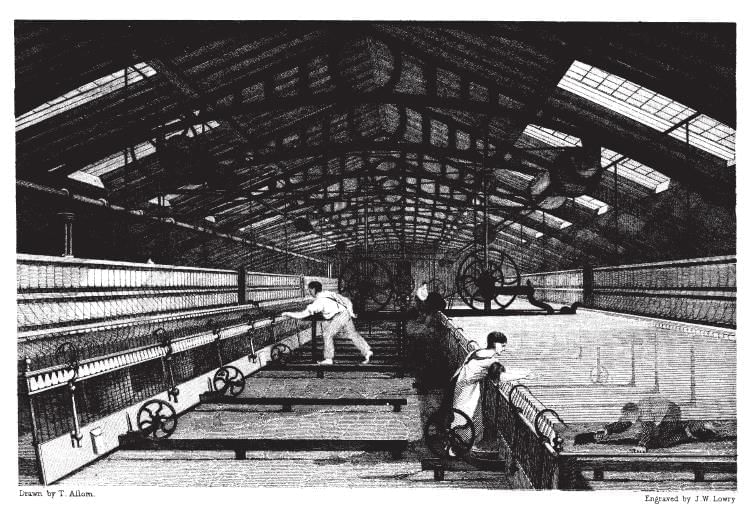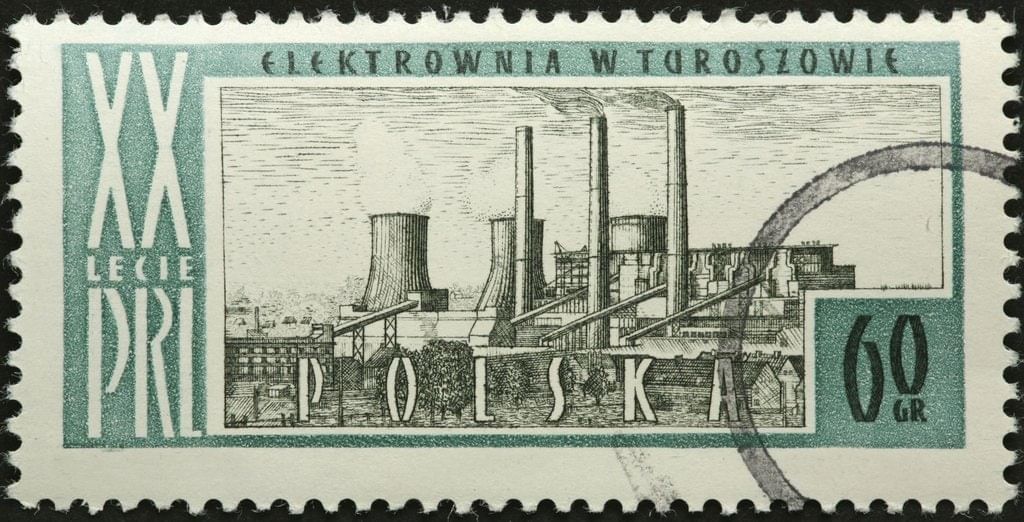Definitions - Indian Factories Act(1948), Industrial Laws | Industrial Laws - B Com PDF Download
| Table of contents |

|
| Introduction |

|
| Important Provisions of the 1891 Act |

|
| Factory Act of 1948 |

|
| Definitions under the Factories Act, 1948 |

|
Introduction
The Factories Act of 1948 was established to safeguard the well-being of workers in factories by regulating various aspects such as employment conditions, working conditions, the working environment, and other welfare requirements specific to certain industries. In the case of Ravi Shankar Sharma v. State of Rajasthan (1993), the Court recognized the Factories Act as social legislation aimed at ensuring the health, safety, and welfare of factory workers, along with other important factors.
The Factories Act provides guidelines and safety measures for the use of machinery and offers strict compliance instructions to factory owners. It was enacted in response to the exploitation of factory workers who were being paid low wages and treated unfairly.
 History of Factories Act, 1948
History of Factories Act, 1948
The history of the Factory Act spans over a century, reflecting the evolution of factories and industries in India. Modern industrialization in India began more than a hundred years after its inception in the United Kingdom.
- Early Industrialization: The first cotton textile factory in India was set up in Bombay in 1854. By 1870, a significant number of industries had emerged in cities like Bombay, Nagpur, Kanpur, and Madras.
- Growth of Industries: In Bihar, the first iron and steel works were established in 1873. Jute spinning mills began operations in Rishra around 1855, and by 1881, Bengal had 5,000 power looms in use. The 1870s saw the establishment of Bally paper mills in Hooghly and various tanning and leather factories in Kanpur, contributing to the rise of factory establishments across India.
- Working Conditions: The early employment of women and children, coupled with long working hours and hazardous, unhygienic conditions, raised significant concerns. These issues prompted the need for legislation to regulate factories and industries.
- Need for Legislation: The necessity for protective labour legislation to improve working conditions, especially for women and children, was recognised as early as 1850. However, the British government took minimal action at that time.
- Labour Welfare Initiatives: The Bara Bazar organisation, founded by Sasipad Bannerjee in 1878, aimed to promote the welfare of jute mill employees. Historical records also mention strikes, such as the one at Nagpur Empress Mill in 1877, highlighting the labour unrest during this period.
- Industrial Revolution Influence: The industrial revolution in England, occurring between 1760 and 1820, brought about changes in production methods and the development of mechanical innovations like the steam engine. This period marked the beginning of using powerful machines to drive production, laying the groundwork for industrialization in India.
Factory Act of 1881
In 1875, a committee was formed to investigate the working conditions of Indian employees in factories. This led to the passing of the first Factory Act in 1881 under the leadership of Lord Ripon. The Factory Act is a crucial piece of legislation in India, inspired by the Factory Act of Great Britain from 1937.
Key Provisions and Powers
- The Factory Act of 1881 empowered local governments to create rules for implementing the Act’s provisions.
- It aimed to control the employment of children, ensure the fencing of machinery, and establish the responsibility to notify factory workers about accidents.
Legislative Process
- The Bill was amended by the Council and passed on July 1, 1881, after receiving approval from the Viceroy.
- It was immediately codified as the Indian Factories Act of 1881 and applied to all of British India.
Objectives and Governance
- The Act governs working conditions by setting laws related to workers’ health, safety, working conditions, and hazardous processes.
- It includes various penalty procedures for violations of its principles.
Protective Labour Laws
- The Factory Act of 1881 introduced protective labour laws and was the result of efforts by philanthropic individuals, social activists in India, and Lancashire manufacturers in Great Britain.
Contributions to the Labour Movement
- Narayan Meghaji Lokhandey, India’s first labour leader and a follower of Mahatma Jyotiba Phule, played a significant role in advancing the labour movement.
- He worked as a storekeeper at a textile mill and dedicated his life to promoting workers’ interests.
- Lokhandey submitted a memorandum signed by 5,300 employees to the Factory Commission, which was established in 1884.
- The Indian government later appointed the factory commission in 1890.
Key Provisions of the Factory Act, 1881
The Factory Act of 1881 introduced several important provisions to protect child workers in factories. Here are the key provisions:
- Prohibition of Child Labor: Children under the age of seven were not allowed to work in factories. Additionally, children were prohibited from working in two different jobs on the same day.
- Working Hours: The maximum working hours for children were set at nine hours per day.
- Holidays: Children were entitled to receive four holidays each month.
- Rest Intervals: Factories were required to provide rest intervals for children to take breaks during work.
- Machinery Safety: Precautions had to be taken when handling dangerous parts of machinery, ensuring proper fencing and safety measures.
- Accident Reporting: Any accidents occurring in a factory or industry had to be reported.
- Applicability: The Act applied to factories using mechanical power and employing 100 or more workers.
Amendment and Further Developments
- The Factory Act of 1881 was later amended due to its inadequacies, leading to the Factory Act of 1891, which addressed more aspects of factory regulation.
- In 1885, a Factory Commission was established, and a Royal Commission on Labour was created in 1891, enforcing recommendations in 1892. This led to the amendment of the Act, known as the Factories Act of 1891, which imposed further restrictions on working hours in factories.
Important Provisions of the 1891 Act
The 1891 Act introduced several important provisions to regulate working conditions in factories. Here are the key provisions:

- Factory Registration: Factories with 50 or more employees were required to register with the authorities.
- Reporting Obligations: Local governments were obligated to report activities in factories employing even 20 workers.
- Child Labor Regulations: The employment of children under the age of nine was prohibited. For children aged 9 to 14, the maximum working hours were set at seven hours per day.
- Women’s Working Hours: Women were allowed to work for eleven hours a day, with a mandatory break of 1.5 hours.
- Night Work Restrictions: Women and children were not permitted to work between 8 p.m. and 8 a.m.
- Weekly Holidays: All employees were entitled to weekly holidays.
- Rest Intervals:. minimum rest interval of 0.5 hours was required to be provided to employees.
- Sanitation and Comfort Regulations: Provincial governments were empowered to establish rules regarding sanitation and comfort in factories.
Factory Act of 1948
The Factory (Amendment) Act of 1948 played a significant role in enhancing labor conditions in India. It was part of a five-year plan initiated during the Interim Congress Regime, aiming to improve various labor aspects by referencing earlier acts and international conventions. The Act was a result of cooperative efforts between the government, employers, and workers, following conferences held in the 1940s. Background and Development
Background and Development
- The need for improved labor conditions led to the consideration of the Factory Act of 1934, the Great Britain Factory Act, and the ILO Convention on safety, health, and welfare.
- In 1942, a conference marked the first cooperation attempt among the government, employers, and workers regarding labor issues.
- This cooperation led to the establishment of advisory bodies, resulting in legislative proposals, including the factories bill.
Legislative Process
- The factories bill was proposed on January 30, 1948.
- It was approved by the Constituent Assembly on August 28, 1948, and received the Governor-General's approval on September 23, 1948.
- The Act came into effect on April 1, 1949.
Key Features of the Factory Act of 1948
- Health, Safety, and Welfare: The Act places a strong emphasis on the health, safety, and welfare of factory workers.
- Working Hours: It regulates working hours, ensuring they are reasonable and not excessive.
- Minimum Age: The Act sets a minimum age for workers, protecting young individuals from exploitation.
- Leave with Pay: Provisions for leave with pay are included to ensure workers' rights to time off.
- Expansion of “Factory”: The definition of “factory” was expanded to include contract labor considerations.
- Child Labor: The minimum age for child labor in factories was raised from 12 to 14 years, and daily working hours for children were reduced.
- Restrictions on Women and Children: The Act prohibits women and children from working in factories during nighttime hours.
- Factory Registration and Licensing: Provisions for factory registration and licensing are included, with state governments responsible for ensuring compliance.
- Regulatory Authority: State governments are empowered to enact rules and regulations for employee benefit management and associations.
- Applicability: The Act can be applied to various establishments, regardless of employee numbers or manufacturing activities.
Legal Precedent
- In the case of Rabindra Agarwal v. State of Jharkhand (2010), the Jharkhand High Court ruled that the Factories Act, being special legislation, takes precedence over the Indian Penal Code.
Goals of the Factories Act, 1948
The main goals of the Factories Act, 1948, are to ensure the safety, health, and welfare of workers in factories and to protect them from various industrial hazards.
- Health: The Act mandates that factories maintain cleanliness and implement necessary measures to protect workers' health. This includes proper drainage, lighting, ventilation, and temperature control. Factories must provide clean water, separate and accessible restrooms and urinals for male and female workers, and ensure these facilities are kept clean.
- Safety: The Act requires safety measures such as proper fencing of machines, restrictions on young workers operating dangerous machinery in enclosed spaces, and the provision of manholes for emergency escapes.
- Welfare: Factories must provide suitable washing facilities, storage and drying areas, seating arrangements, first-aid supplies, shelters, restrooms, and lunchrooms for workers.
- Employment Restrictions: The Act imposes restrictions on the employment of women, children, and adolescents regarding working hours, intervals, holidays, and annual leave with pay.
- Working Hours: The Act stipulates a maximum of 48 working hours per week for adult workers and mandates weekly holidays.
- Penalties: The Act outlines penalties for violations, including fines and imprisonment. Offenses may result in imprisonment for up to a year, fines up to one lakh rupees, or both. Misuse of welfare, safety, and health equipment by employees may incur a fine of Rs. 500.
Overall, the Factories Act, 1948, aims to protect workers from exploitation and improve their working conditions and environment within factory premises.
Application of the Factories Act, 1948
The key applications of the Factories Act, 1948, are:
- The Act applies to the entire country of India, including Jammu and Kashmir. It covers all manufacturing processes and premises that meet the definition of a factory as per Section 2(m) of the Act. This includes factories owned by the central or state governments, as outlined in Section 116 of the Act.
- The Act is applicable to factories that use power and employ 10 or more people on any working day in the preceding 12 months.
- For factories that do not use power, the Act applies to those that employ 20 or more people on any working day in the preceding 12 months.
- Section 85 of the Factories Act allows state governments or Union Territories to cover additional factories under the Act.
Definitions under the Factories Act, 1948
The important definitions under the 1948 Act are as follows:
1. Adult and child: An adult is defined as someone who has attained the age of eighteen, as defined in Section 2(a) of the Act.
A child is someone who has not attained the age of fifteen, as defined in Section 2(c) of the Act.
2. Adolescent: Adolescent is defined in Section 2(b) of the Act. An adolescent is defined as someone who has attained the age of fifteen but has not yet attained the age of eighteen.
3. Calendar year: The calendar year is defined in Section 2(bb) of the Act. A calendar year is a period of twelve months commencing on January 1st of any year.
4. Competent person:. competent person is defined in Section 2(ca) of the Act. A competent person is someone or a group of individuals who have been approved by the Chief Inspector to conduct tests, examinations, and inspections that must be conducted in a plant. He/she is someone who has the necessary knowledge and experience to handle the complexity of the issue.
5. Hazardous process: Hazardous process is defined in Section 2(cb) of the Act. A hazardous process is defined as any process or activity related to the industry that requires special care of raw materials that are used in it, intermediate or finished products, by-products, wastes, or effluents that would cause material impairment to the health of those engaged in or connected with it or that result in polluting the environment.
6. Machinery: Machinery is defined in Section 2(j) of the Act. The term covers prime movers, transmission machinery, and any other equipment and appliances that produce, transform, transmit, or apply power.
7. Power: Power is defined in Section 2(g) of the Act. Power is defined as any type of mechanically transmitted energy that is not created by a human or animal agency.
8. Week: Week is defined in Section 2(f) of the Act. A week is defined as a seven-day period beginning at midnight on Saturday night or other nights that have been approved in writing for a specific area by the Chief Inspector of Factories.
9. Day: Day is defined in Section 2(e) of the Act. A day is defined as a 24-hour period beginning at midnight.
10. Young person: Young person is defined in Section 2(d) of the Act. A young person is defined as a child or an adolescent.
11. Factory: The definition of a factory is specified in Section 2(m) of the Factories Act 1948. A factory is any premises, where it has certain limits and boundaries-
If a manufacturing process is regularly carried out in any portion of the premises with the use of power and with ten or more workers now engaged in such activity or were engaged in such work on any day during the previous twelve months; or
If any element of a manufacturing process is performed inside the premises without the use of power and is regularly performed with twenty or more employees working or having worked there on any given day within the previous twelve months.
12. Manufacturing process: The manufacturing process definition is specified under Section 2(k). The term “manufacturing process” refers to any process for:
- Generating, altering, repairing, ornamenting, finishing, packing, oiling, washing, cleaning, demolishing, or otherwise treating or adapting any article or;
- A substance in preparation for use, sale, transportation, delivery, or disposal or;
- Producing, transforming, or transmitting energy or;
- Creating type for printing, letterpress printing, lithography, bookbinding, or any other similar process or;
- Constructing, reconstructing, repairing, refitting, finishing, or breaking up ships or vessels, etc. (as defined by the 1976 Amendment Act);
- Preserving or storing any item in cold storage.
13. Worker: The worker definition is specified under Section 2(l). A worker is someone who performs any job associated with a manufacturing process, whether they are employed directly or indirectly through an agency, a contractor, or any other means. This helps to maintain any equipment or facilities utilised in the manufacturing process. The worker may be hired with or without the principal employer’s knowledge and with or without compensation.
|
52 videos|57 docs|18 tests
|
FAQs on Definitions - Indian Factories Act(1948), Industrial Laws - Industrial Laws - B Com
| 1. What is the Indian Factories Act (1948)? |  |
| 2. What are the key provisions of the Indian Factories Act (1948)? |  |
| 3. What is the penalty for non-compliance with the Indian Factories Act (1948)? |  |
| 4. What is the role of the Inspector under the Indian Factories Act (1948)? |  |
| 5. How does the Indian Factories Act (1948) ensure the welfare of workers? |  |





















